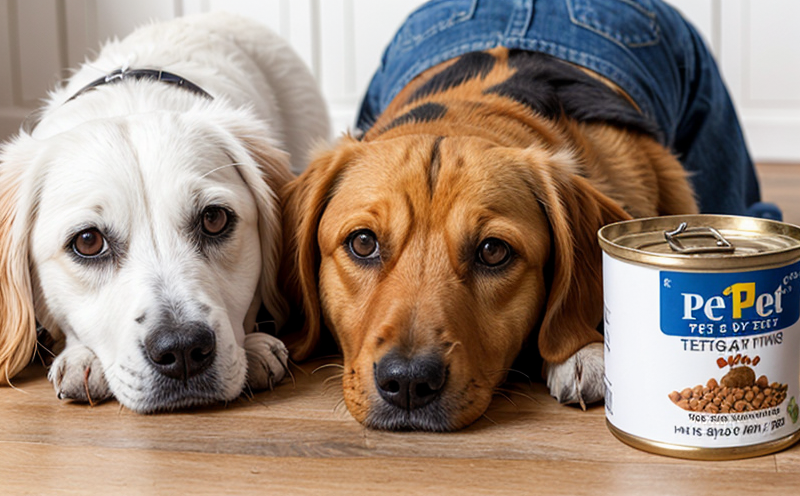ISO 68407 Selenium Quantification in Pet Food
The quantification of selenium in pet food using ISO 68407 is a critical process that ensures the safety and nutritional quality of products intended for pets. Selenium, an essential trace element for animals, plays a crucial role in their health by supporting immune function, thyroid metabolism, and reproduction. However, excessive or insufficient levels can lead to health issues such as selenosis in cats and dogs.
The ISO 68407 standard provides a methodical approach to accurately measure selenium content in pet foods. This service is particularly important for quality managers, compliance officers, and R&D engineers responsible for ensuring that pet food meets strict nutritional requirements and safety standards. By adhering to this international standard, manufacturers can guarantee the correct levels of selenium which are essential for pets.
The testing process involves several stages: sample preparation, digestion, instrumental analysis using atomic absorption spectroscopy (AAS) or inductively coupled plasma mass spectrometry (ICP-MS), and final reporting. Sample preparation is critical to ensure accurate results; this includes grinding the pet food into a fine powder and digesting it with acid solutions to release selenium from its compounds.
The use of atomic absorption spectroscopy (AAS) or inductively coupled plasma mass spectrometry (ICP-MS) ensures precise measurement. ICP-MS, in particular, is preferred for its high sensitivity and ability to detect trace amounts accurately. This method allows laboratories to quantify selenium down to parts per billion levels, which is crucial given the narrow range of acceptable selenium concentrations.
The results obtained from these tests are reported according to ISO 68407 guidelines, providing a clear indication of the selenium content in pet food products. These reports are essential for quality assurance and can be used by manufacturers to adjust formulations or to ensure compliance with regulatory requirements.
In summary, ISO 68407 Selenium Quantification in Pet Food is vital for ensuring that pet foods meet nutritional standards and safety regulations. By using this standardized method, laboratories can provide accurate, reliable results that are critical for the pet food industry.
Why It Matters
The importance of accurately quantifying selenium in pet foods cannot be overstated. Selenium is an essential trace element, and its role in pet health is multifaceted. Adequate levels support the immune system and thyroid function, while excessive amounts can lead to toxicity. Ensuring that pet food products contain the correct amount of selenium is not only a regulatory requirement but also a responsibility towards animal welfare.
Regulatory bodies such as the American Association of Feed Control Officials (AAFCO) recommend specific levels of selenium in pet foods based on weight and life stage. For instance, adult cats require 0.12 mg/kg of diet while puppies up to three months old need 0.35 mg/kg. These guidelines are critical for maintaining optimal health and preventing deficiencies or excesses that could lead to serious health issues.
From a manufacturing perspective, accurate quantification ensures compliance with these standards and can help in formulating products that meet market demands. It also helps in identifying potential quality control issues early on, thereby minimizing the risk of recalls and associated costs. For consumers, knowing that their pets are consuming food within recommended guidelines provides peace of mind.
In conclusion, accurate selenium quantification is a cornerstone of responsible pet food manufacturing. It ensures compliance with regulations, supports animal health, and builds consumer trust in product quality.
Benefits
- Enhanced Product Quality: Ensures that the product meets strict nutritional standards, thereby enhancing overall pet health.
- Regulatory Compliance: Helps manufacturers stay in line with international and national regulations for pet food safety.
- Consumer Trust: Provides transparency to consumers about the nutritional content of their pets' diet.
- Improved Animal Health: Ensures that pets receive the correct amount of selenium necessary for optimal health and function.
The accurate quantification of selenium in pet foods, as per ISO 68407 guidelines, not only benefits manufacturers but also enhances the overall well-being of pets. This process ensures that pet food products are safe, effective, and meet the highest quality standards.
Why Choose This Test
- International Standard: ISO 68407 is an internationally recognized standard that ensures consistency and accuracy in testing across different regions.
- Precision Measurement: The use of advanced instrumentation like ICP-MS guarantees precise measurement, which is essential for accurate results.
- Compliance Assurance: Adhering to this test helps manufacturers ensure compliance with regulatory requirements and industry standards.
- Quality Control: This test provides a robust method for quality control, enabling early detection of potential issues in the manufacturing process.
Selecting ISO 68407 Selenium Quantification in Pet Food ensures that manufacturers can meet stringent nutritional requirements and provide safe pet food products. It is a reliable choice for those committed to delivering high-quality pet food that meets both regulatory standards and consumer expectations.





